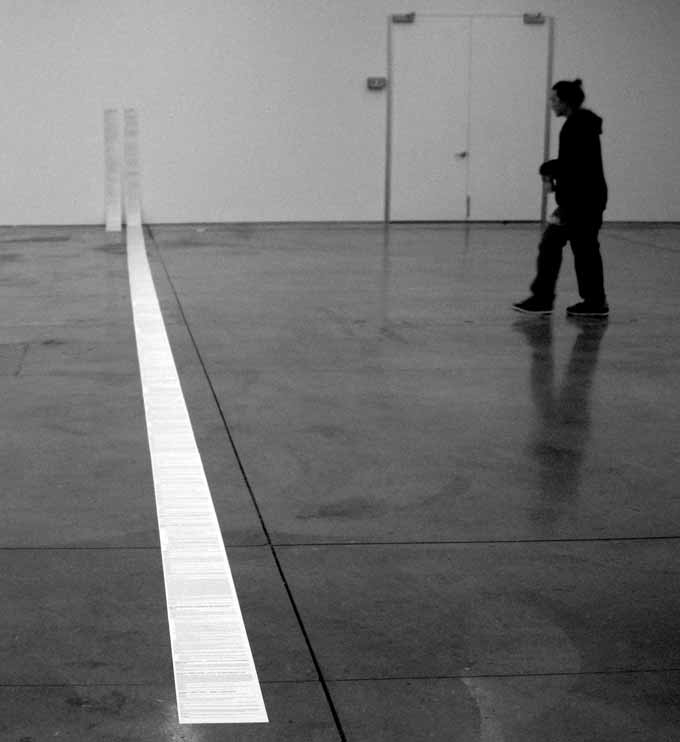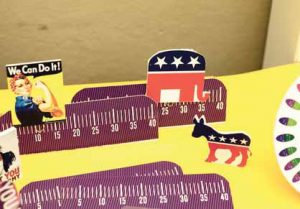
The Golden State isn’t looking so golden these days, despite the fact that it is still the eighth largest economy in the world. California’s physical and social infrastructure is crumbling: its water system is on the verge of collapse, its transit network is the worst in the country, its social welfare net is being gutted, its prison system is overflowing, and its public K-12 education system ranks among the lowest in the nation. The state’s budget deficit, which started at $20 billion at the beginning of the year, will likely increase given the recent news that state tax revenues collected in April were unexpectedly low. Because the government already made severe cuts to programs last year in an attempt to close the deficit, the additional cuts this year are sure to be devastating. According to the US Census, California already has one of the leanest public workforces in the country. Governor Arnold Schwarzenegger’s newest revised budget plan doesn’t just reduce spending further, it eliminates entire welfare programs, including those providing assistance for families living below the poverty line. The governor also proposes further cuts to education, a system already at its breaking point. Are you a graduate of a Cal or Cal State institution? Your alma mater has seen cuts of 20–30%. Tuition has increased 50% since 2002 while aid to students has been reduced 50%.
How did we get here?
The answer isn’t simply the inevitable trickle-down of worldwide economic woes. California created the blueprint for its own demise decades ago, and we’re now seeing the dramatic culmination of these ill-conceived measures. More than ever, the state is in critical need of a fundamental redesign.

At the heart of the problem is California’s system of government. California is the only state in the nation that requires a “supermajority” to pass legislation concerning budget and revenue. In 1933, California voters imposed the 2/3 rule to pass a budget, and in 1978, Proposition 13 added the 2/3 requirement for raising taxes. As gridlock has become the norm thanks to increasingly polarized party politics, the supermajority system means that California ends up being controlled by a small conservative minority. If a 2/3 vote is necessary in both the Senate and the Assembly to pass any tax or budget, just a few senators or assemblypersons can hold the state hostage by demanding significant takeaways—from the weakening of environmental regulations, to a ballot measure establishing open primaries, to the special funding of pet projects—all in exchange for a vote to approve a state budget. Sixteen of the past twenty budgets in California have been late as a result of these minority holdouts, causing upheaval and interruption of critical government programs. This system is not a representational democracy, but rather a tyranny of the minority. As R. Jeffrey Lustig, professor of government at CSUS, recently wrote in the Sacramento Bee, “The state’s governing crisis is most evident in the legislature’s chronic inability to pass annual budgets without accounting gimmicks and fiscal fantasies. But beneath this visible stalemate lie deeper problems—a crisis of representation, a socioeconomic skewing of the electorate, and a widening separation of politics from cultural and economic reality.”
The irony, of course, is that with a simple majority vote on a ballot initiative in a general election, the California constitution can be amended, political principles overturned, and people’s lives radically changed. Constitutions are intended to be textual expressions of enduring democratic values. Yet, the California constitution has been amended over 500 times. It is now eight times longer than the US constitution—longer, in fact, than any other constitution on earth except for those of Alabama and the nation of India. It has been called everything from a “bloated mishmash” to a “patchwork mess.” The most recent successful ballot measure was Proposition 8, which, with just 52% of the popular vote, instituted a constitutional amendment banning gay marriage. So, in a state where less than half the electorate shows up to vote in any given election year, why can major political changes be instituted via a simple majority victory on a ballot initiative, but sustainable state budgets and necessary revenue measures require much more?
This year, several ballot propositions attempted to address these constitutional issues. “Repair California” called for a limited constitutional convention. Other initiatives called for a change to the 2/3 rule for passing a budget. “Californians For Democracy” advocated for changing the 2/3 rule to a simple majority for budget and revenue. Yet none of these efforts succeeded. The fact is that, in a state of 38 million, a grassroots movement can no longer get a measure on the ballot without having several million dollars in the bank to pay for the signature gathering process. While some of these initiatives were supported by business organizations and foundations, in the end they all lacked sufficient funding to collect the required signatures from 8% of registered voters before the April deadline. The notion that the ballot initiative process is an expression of direct democracy is largely a ruse, as special interests have more or less hijacked the process. As political scientist Thad Kousser explains, the ballot initiative process is a Catch-22: “It is hard to raise money for ballot measures that do not help any narrow interest, but nearly impossible to obtain broad support for measures that appear to provide a special benefit.”
These ballot measures will be back again next year, hoping for more success. Yet, it is difficult to imagine a situation in which Proposition 13 won’t act as the third rail in determining these political outcomes. California has a longstanding anti-tax and anti-spend culture. When polled about the state’s crisis, Californians consistently answer that they want the budget deficit remedied through spending cuts and not through new taxes. Yet, when asked which government services should be cut to balance the budget, they refuse to choose. When will Californians stop expecting something for nothing and come to terms with the realities of our inadequate tax structures? The California Tax Reform Association has suggested several tax policies that could be changed in order to close the deficit, but without adding to the tax burden of the general public or negatively impacting economic growth and recovery. Due to the supermajority rule, however, the hands of the legislative majority are more or less tied: it is dubious whether any of these necessary revenue measures will be instituted.

Why should the architecture profession involve itself in these political issues? On the most basic level, we all rely on government services for our lives and work: we want clean water to come out of the tap, we want to drive or bike on well-maintained streets, we want fire stations and hospitals in case of emergency, etc. While architects do maintain a political presence through The AIACC’s political action committees, these groups very much function in a vein of self-interest, focusing on what’s best for architecture as a business practice. The PACs monitor and lobby the legislature on issues that directly affect the profession, advocating for the appropriation of stimulus dollars or state support of energy-conscious design and technology. CALC PAC appeals to members by asking them to consider contributions to its efforts as “an investment in your bottom line.”
Of course, architects also exercise their political will by becoming engaged in socially responsible design—from green design to housing for at-risk populations and mitigation and reconstruction in the wake of natural disasters. There are many worthy causes that demand attention, though often we seem to be most drawn to those off our own shores. California needs serious intervention now before it reaches full status as a third world country. Architects are in a unique position to change this course: they can re-imagine the social as well as the built environment in ways that would never occur to lawmakers. As professionals, they have skills that are fundamentally lacking in the realm of politics: the organizational and creative prowess to assess needs, identify opportunities, model, coordinate stakeholders, and bring projects to fruition.

Community-based design practices can also be extremely useful when applied to the political arena. Early steps to realize a more expanded political role for architects have taken shape in the local chapters of “Citizen Architects” in California. And at the 2010 AIA Convention in Miami, the Citizen Architect Exchange offered opportunities to network and “explore the development and employment of design and leadership skills in the public arena.” AIA Citizen Architects, however, have yet to incorporate the design of civic processes and of government itself as important targets of activity. Design can be a tool to bring about systemic change, and when the federal stimulus dollars dry up, we’re going to need a more sustainable social, political, and economic environment in which to live and work. Architects can and should apply best practices and innovation to foster alternatives to business as usual in Sacramento. With our state structure collapsing under the weight of its own dysfunction, we really can’t afford to sit on the sidelines any longer.
Useful resources:
californiachoices.org
caltaxreform.org
keepcaliforniaspromise.org
cbp.org
californiansfordemocracy.com
Author Karen Fiss, PhD, is an associate professor of Design and Visual & Critical Studies at California College of the Arts. With digital media artist Peggy Weil, known for her “serious games” on political issues, she taught a Spring 2010 Contemporary Issues studio exploring how designers can help solve some of California’s worst legislative and political problems. Her most recent book is Grand Illusion: The Third Reich, the Paris Exposition, and the Cultural Seduction of France, published by the University of Chicago Press (2009). Her current research examines the impact of nation branding on the social and built environment of South Africa and other emerging economies.
Originally published 2nd quarter 2010 in arcCA 10.2, “The Future of CA.”





